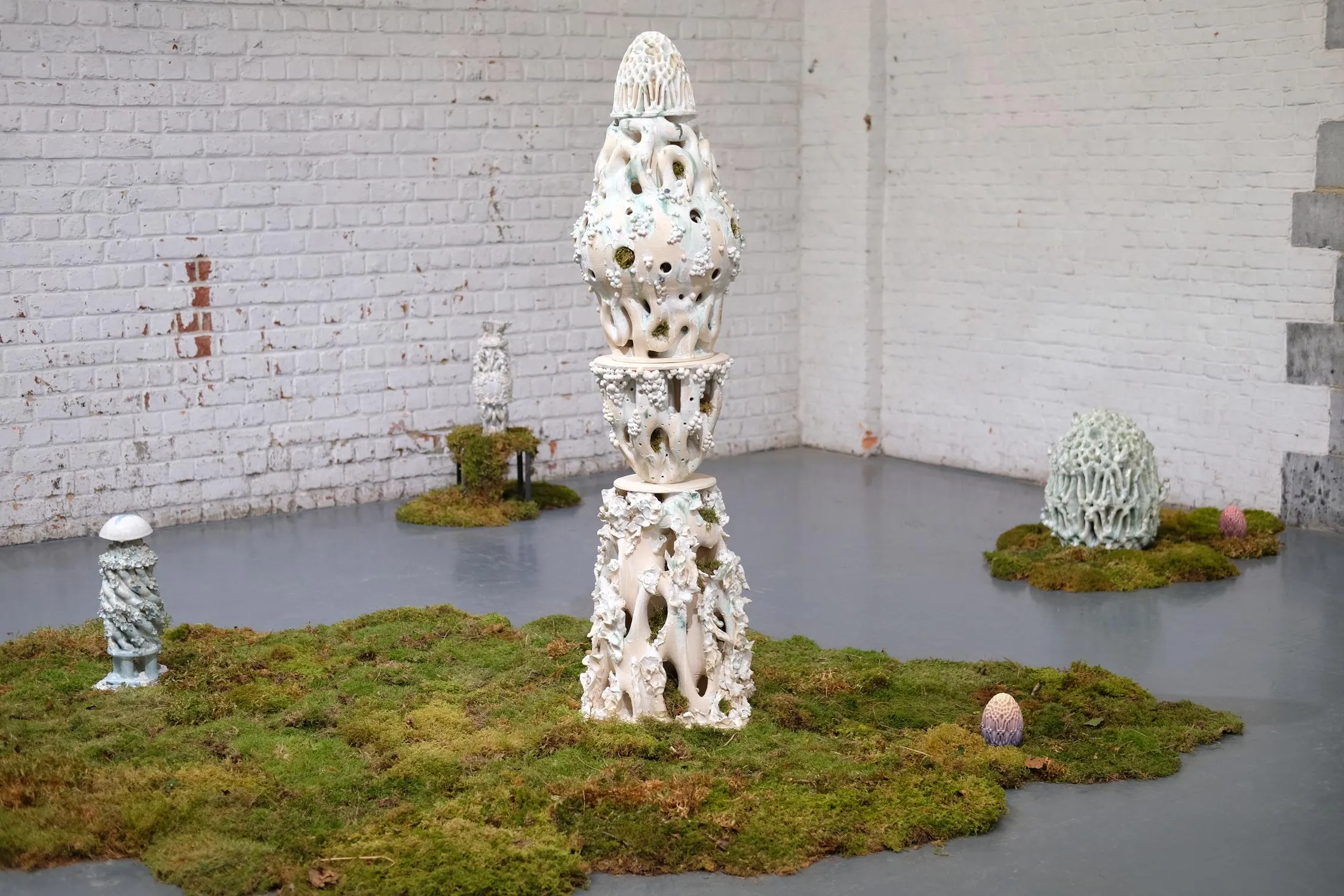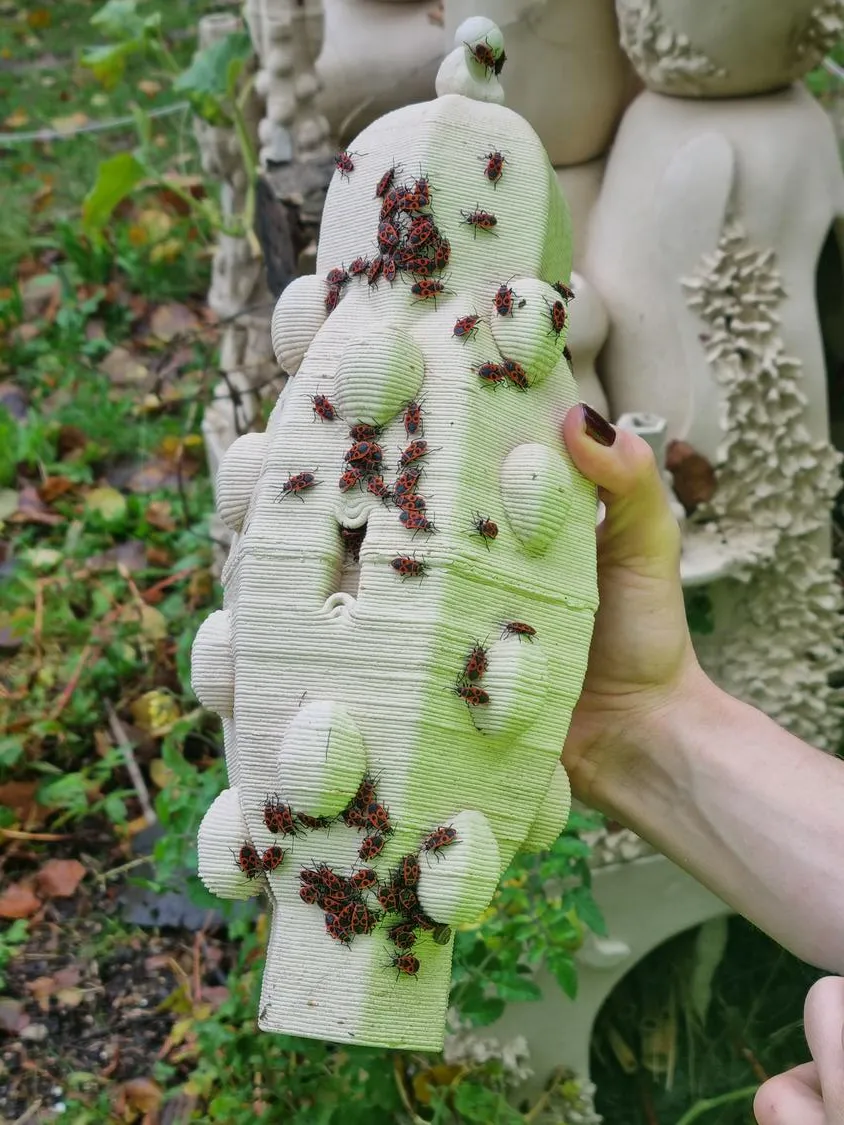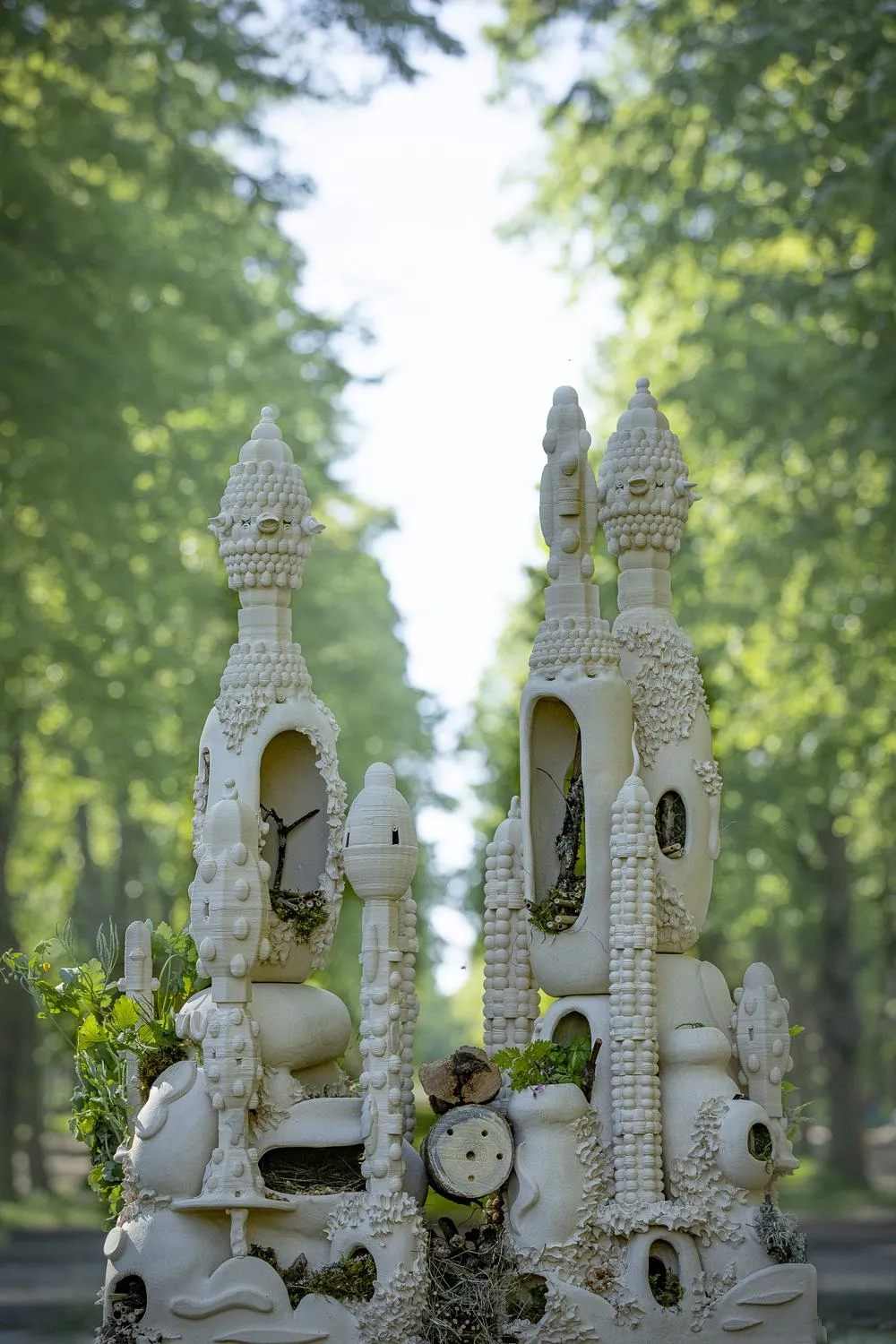French artist and designer Raphaël Emine has created a new project called “Les Utopies Entomologiques” (Entomological Utopias) that combines art with environmental conservation. The project features ceramic bug hotels made with 3D printing technology that provide shelter for insects, moss, bacteria, and plant life. These structures are designed with intricate hexagonal patterns and curved forms inspired by natural elements like beehives and termite mounds.

The bug hotels showcase modular, adaptable designs with carefully planned corridors, tunnels, and pockets that mimic natural insect habitats. Emine collaborated with WASP, an Italian ceramic 3D printing company, using machines such as the WASP 40100 LDM and Delta WASP 2040 Clay to create the structures. The pieces are printed with recycled clay, then hand-finished and fired without glazing to maintain a porous surface suitable for plant growth and insect nesting.

These ceramic sculptures serve both artistic and ecological purposes by being placed in urban gardens and parks, including the Parc de la Maison Blanche in Marseille. The unglazed ceramic surfaces encourage moss growth and provide homes for various insect species, supporting biodiversity in urban environments. The structures function as living laboratories to study how specific shapes and colors attract different insects.

Emine’s work explores questions about coexistence between human structures and natural life forms. The project proposes a new design approach that considers ecological needs alongside aesthetic elements. Through the application of biomimicry and 3D printing techniques, these micro-utopias offer potential solutions for integrating natural habitats into designed environments.
Source: parametric-architecture.com

